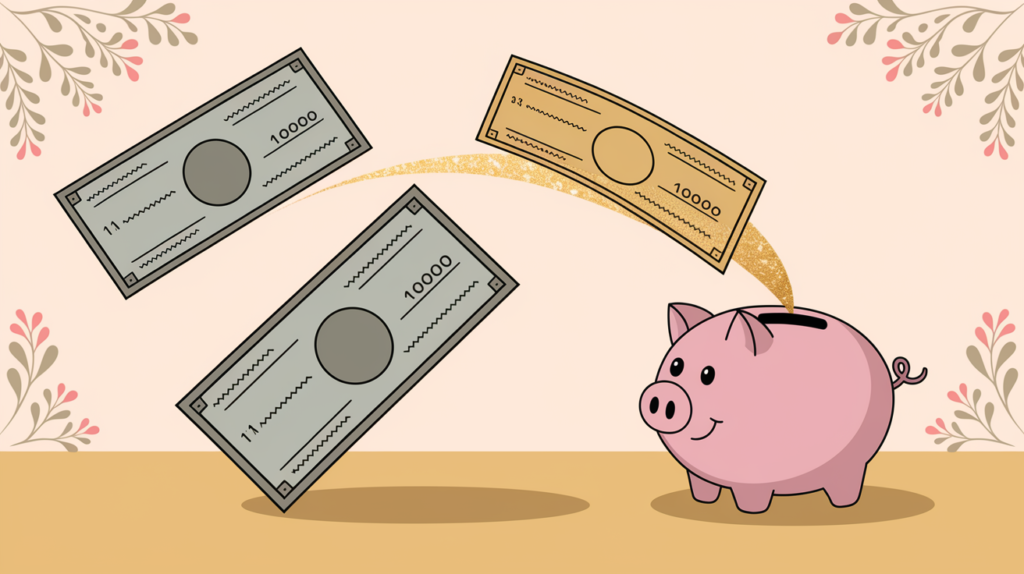
If biweekly paychecks leave you feeling off balance, you’re not alone. But there’s a better way.
Biweekly paychecks can feel like both a blessing and a budgeting puzzle. One week, you’re feeling ahead; the next, you’re juggling bills, groceries, and an unexpected expense—wondering where all your money went.
If you’ve ever struggled to keep your budget steady between paydays, you’re not alone. Budgeting with a biweekly paycheck is very different from monthly income. Most of us are taught to think in months—but biweekly pay works in 14-day cycles, with 26 paychecks a year instead of 12.
The good news? Once you master this rhythm, you’ll unlock a whole new level of financial control. You’ll stop the paycheck-to-paycheck stress and even create space for savings, goals, and breathing room.
Let’s walk through how to make biweekly budgeting feel simple, powerful, and totally manageable—no matter your income.
What Makes Biweekly Budgeting Unique?
A biweekly schedule means you receive two paychecks every month, except for two magical months where you receive three. That extra paycheck is often unaccounted for—and when used intentionally, it can change your whole financial trajectory.
But biweekly pay also means your bills and income don’t always align. Some months feel tight. Others feel generous. This inconsistency is what throws most people off.
The key to winning with biweekly pay is not earning more—it’s planning smarter. Here’s how.

1. Stop Budgeting Monthly—Start Thinking in Pay Periods
Instead of trying to cram everything into a calendar month, break your budget into paycheck chunks—two-week blocks where you plan only for what needs to happen until the next payday.
This simplifies your focus. You’re no longer juggling a whole month—you’re planning for 14 days at a time.
How to do it:
List all fixed and variable expenses that fall within that two-week period. Cover those first, then assign any leftover money to savings, debt, or sinking funds.
2. Use a Zero-Based Budget
Biweekly budgeting works best when every dollar has a job. That’s the heart of zero-based budgeting: income – expenses = zero.
You don’t spend randomly—you spend intentionally.
Why it works:
This system makes sure you’re never guessing where your money went. Instead, you’re directing it with purpose.
Bonus Tip: Use a planner or printable to map this out every paycheck.
3. Divide Big Bills Between Paychecks
Have rent or a credit card due all at once? That can drain one paycheck and leave nothing for groceries or fuel.
The fix? Split large monthly bills in half and set aside half from each paycheck. This way, no one check is overburdened.
Example:
Rent is $1,200. Save $600 from paycheck one, and $600 from paycheck two. Come rent day, you’re ready.
4. Automate Your Core Expenses
Consistency is your best friend when budgeting. Set up automatic transfers or bill payments right after payday so that essentials are taken care of immediately.
What to automate:
- Rent/mortgage
- Insurance
- Utilities
- Emergency fund contributions
- Credit card minimums
This reduces decision fatigue and helps you avoid overspending on non-essentials.

5. Sync Your Bills to Your Paycheck
Call your service providers and request to move your due dates to align with your payday schedule. This one small action can make your entire budget smoother.
Why it matters:
If your biggest bills hit before payday, you’ll always feel like you’re catching up. When they hit after you get paid, you’re prepared.
6. Create Sinking Funds for Non-Monthly Expenses
Biweekly budgeting often fails because of “surprise” expenses—holidays, car repairs, school fees.
But they’re not really surprises—they’re just non-monthly. That’s where sinking funds come in.
How it works:
Break big upcoming expenses into small, manageable savings goals and contribute to them every paycheck.
Example:
Need $600 for a holiday gift budget? Save $50 from each paycheck for 3 months.
7. Meal Plan and Shop Biweekly
Groceries are one of the biggest budget busters. With a biweekly plan, you can shop smarter and reduce food waste.
Plan:
- 14 meals (for 2 weeks)
- Batch cook/freezer prep
- Stick to a grocery budget with cash or a prepaid card
Bonus: Cooking in bulk once saves time and money throughout the cycle.

8. Treat the 3rd Paycheck as a Bonus
Twice a year, you’ll get a third paycheck in a month. Don’t let it disappear into random spending.
Use it to:
- Boost your emergency fund
- Make an extra debt payment
- Start investing
- Save for holidays, travel, or annual bills
It’s like a surprise raise—if you plan for it.
Sample Paycheck Planning Layout
| Paycheck 1 | Paycheck 2 |
| Rent (Half) – $600 | Rent (Half) – $600 |
| Groceries – $150 | Groceries – $150 |
| Utilities – $100 | Internet – $50 |
| Gas – $50 | Gas – $50 |
| Debt Pay – $75 | Sinking Fund – $75 |
| Emergency Fund – $50 | Savings – $50 |

Final Thoughts:
Biweekly budgeting doesn’t have to be confusing or chaotic.
With a little planning, you can take full control of your money. You’ll not only pay your bills on time—you’ll start building a future with intention, clarity, and freedom.
Think of every paycheck as a tool—not just to survive, but to build a system that supports your goals.
You’re not behind. You’re building something steady, one pay period at a time. And that’s a millionaire habit in itself.